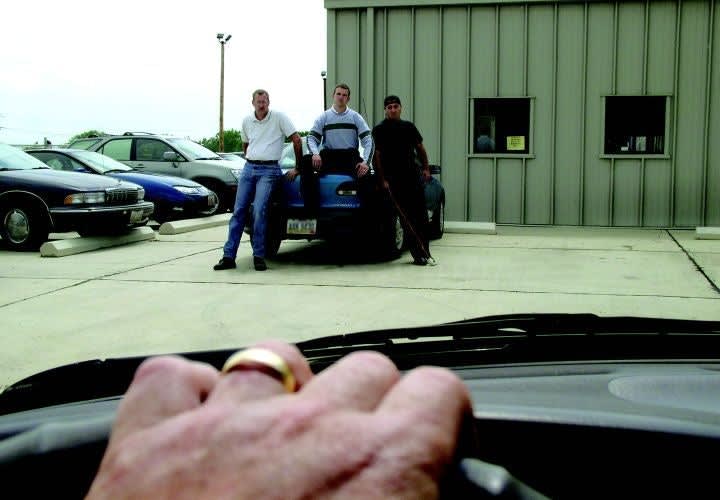Remember, no one can strike something he cannot see. Move quickly and with full aggression. To deal with multiple attackers, you need to be in more than one place very quickly. You may very well need to deliver multiple blows on multiple persons within 1.5 seconds. A superior fighting attitude will win the day.
Using a baton can keep multiple suspects at bay, as long as they do not have a superior weapon like a firearm. An impact weapon is only as good as its reach and a gun nullifies this advantage. I interviewed an officer who fought off three suspects with his ASP expandable baton by "swinging the thing back and forth as fast and as hard as I could," he said. "Oh yeah, I also screamed, yelled, and generally acted like a crazy man. It's kinda' interesting how suspects will give someone they think is crazy a wide berth." Doing the unexpected can have fantastic results.
If firearms are involved, using cover may mean the difference
between life and death. Taking note of possible cover, as well as escape routes prior to making contact, is a good idea when responding to any situation. Keep in mind that when dealing with multiple suspects the closest cover may be one of the suspects themselves.
Very seldom do potential attackers line up side by side like targets on the range. People who are preparing to attack separate and stagger themselves. Moving in such a way as to put the suspects in each other's line of fire may delay their attack, or, as in the case of one situation I am aware of, result in one suspect actually shooting the other. This is certainly one way to reduce the odds against the lone officer.
Regardless of what counter response is chosen, do something! Even if your course of action turns out to be wrong, you have to do something. Just don't stand there flat footed (no pun intended) and let your fate rest in the hands of a violent criminal offender who likely lacks the compassion that you possess. Never make the mistake of applying your thoughts or feelings to those of the criminal. Trust me, they are not the same. Stay alert, stay in shape, and practice with your personal weapons. Do the unexpected. And remember, constantly "check your 360."












